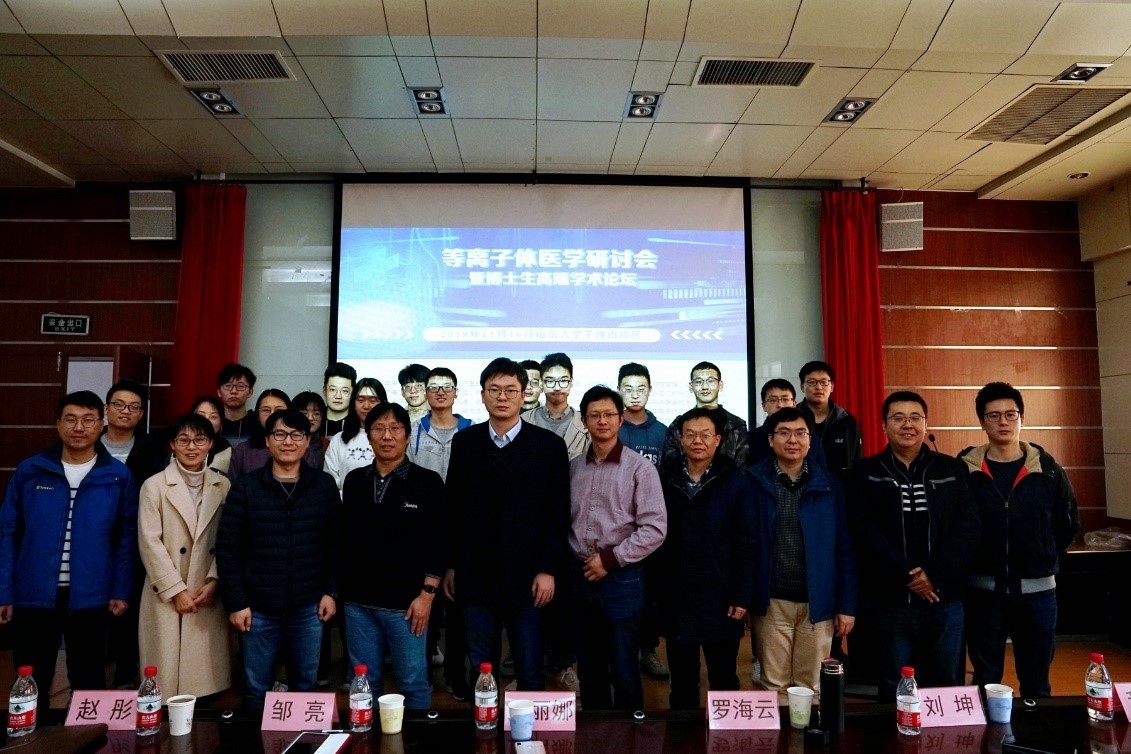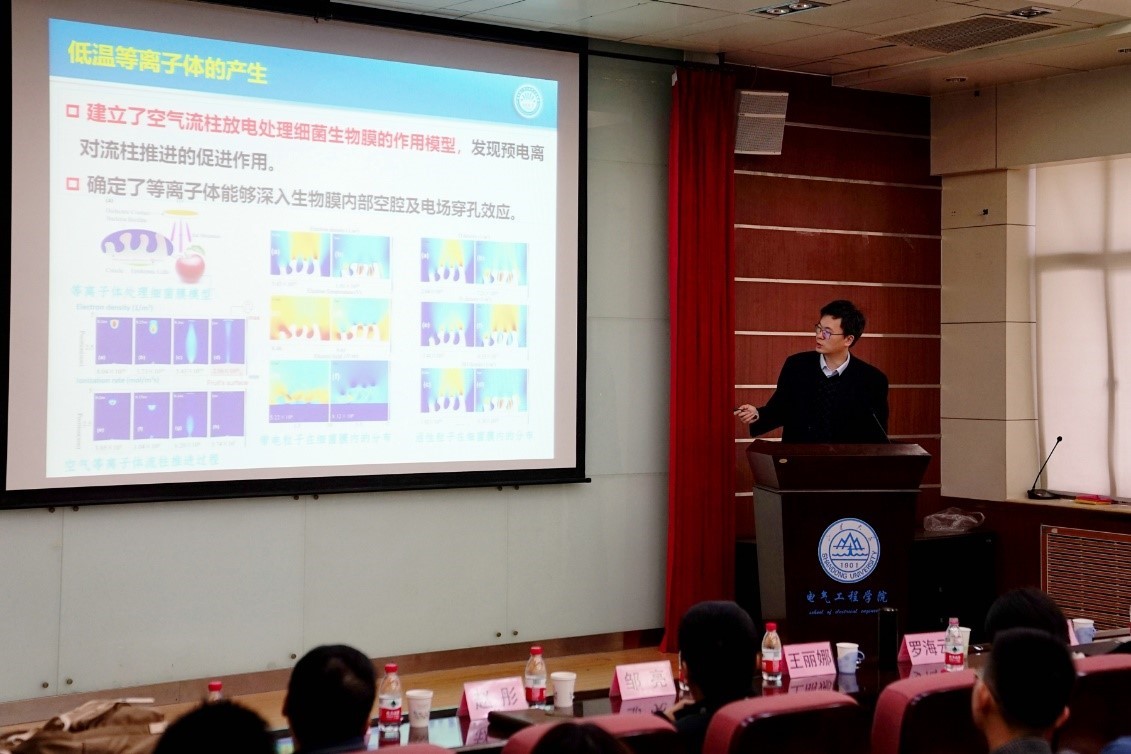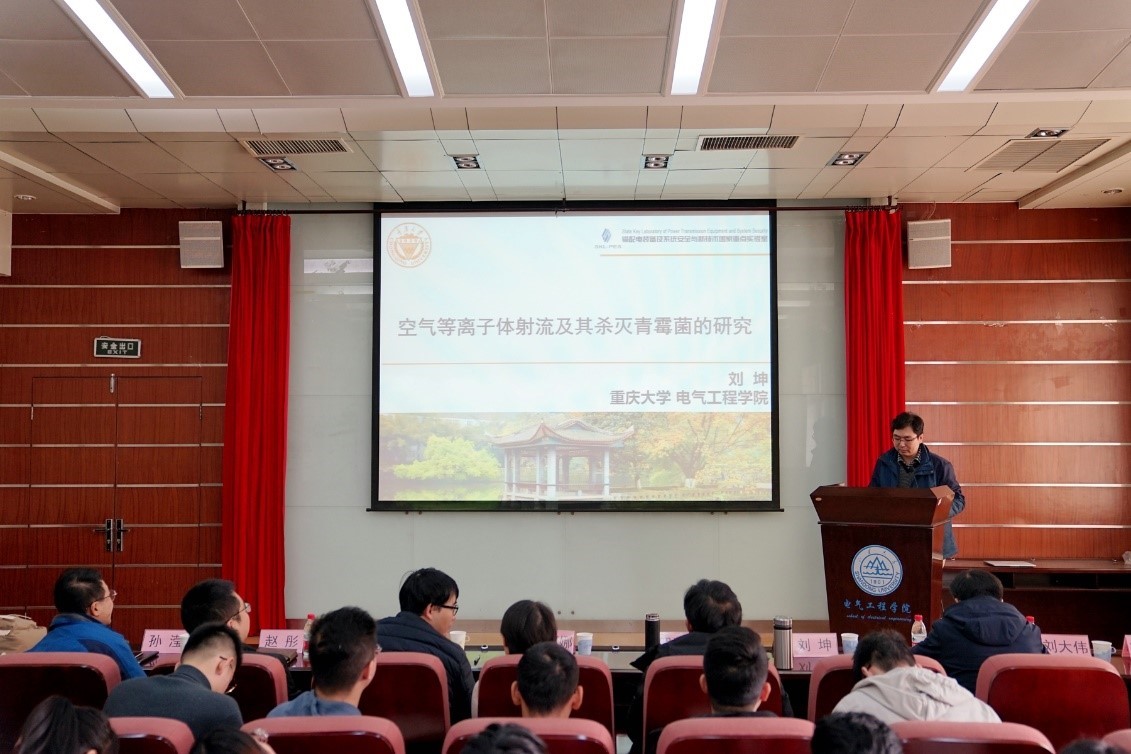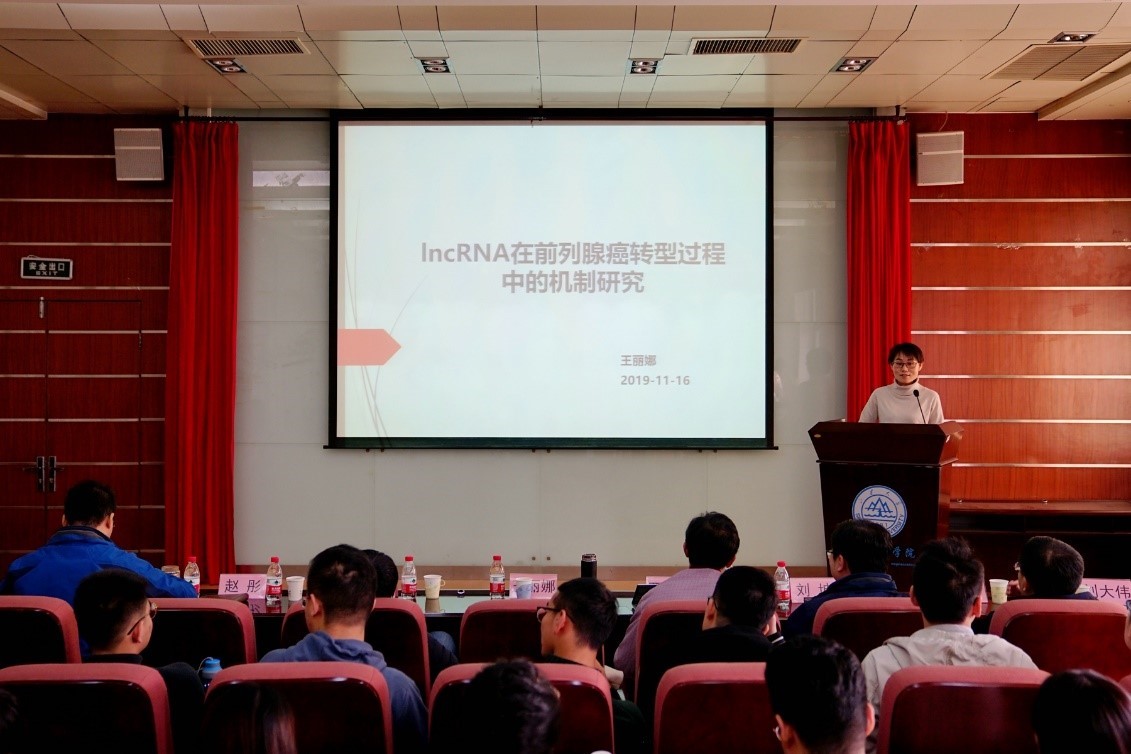The ‘plasma-medical seminar and doctoral high-end academic forum’ was successfully held in the lecturing hall of the Electric Power Building in Qianfoshan campus on November 16, 2019, under the support of the school of Electrical Engineering. The seminar focused on the advanced discharge plasma technologies applied in potential bio-medical applications. The seminar was hosted by Professor Zhang Yuantao and Associate Professor Zhao Tong from the academic team ‘Discharge plasma and its biomedical application (DPBA)’.

The seminar started at 8:30 am. The first guest reporter, Professor Liu Dawei from Huazhong University of Science and Technology (HUST), gave a presentation titled ‘The fundamental research on the application of atmospheric low-temperature plasma in skin treatment’. He discussed the generation, transportation and application of low-temperature plasma in the treatment of skin diseases in detail. Regarding the generation of low-temperature plasma, Professor Liu established a two-dimensional model for plasma jet, indicating the propagation mechanism of the plasma bullet and confirming the density distribution for crucial charged particles. He also established a model to describe the interaction between gaseous plasma jet and biological membrane of bacteria, discovering the facilitating effect of pre-ionization on streamer’s propagation and the mechanism of plasma deeply entering internal cavities of biological membrane. Professor Liu found that the direct skin-penetration could be achieved by the RNS species in liquid plasma rather than the active species in gaseous plasma by investigating the plasma-skin-penetration model. In the application of skin disease treatment, the research on plasma-stimulated wound recovery was implemented for diabetic mice and a corresponding theoretical model was also developed to interpret the underpinning physical mechanism.

The second guest reporter, Associate Professor Cheng Cheng from the Institute of plasma of the Chinese Academy of Sciences, presented a report title ‘Investigation on low temperature plasma deactivation of microbial membrane and its regeneration’ He pointed out that medical plasma has some unique advantages over traditional treatment methods, as it provides strong pertinence, high efficiency and minor side-effects. Professor Cheng also conducted a preliminary study on the characteristics of plasma inactivation for microbial membrane and its regeneration and on the clinical application of plasma to skin diseases. He found out that the ROS density in cells increases as result of its interaction with atmospheric plasma jet and the corresponding regeneration, metabolism and intactness for S. aureus membrane are weakened to some extent.

The third guest reporter, Associate Professor Liu Kun from Chongqing University, gave an report, titled ‘Research on air plasma jet and its application in killing penicillium’. He used two common ways to generate air plasma jet: micro-hollow cathode and needle-hole discharge, and studied the influence of various parameters on the characteristics of these two plasma generation methods. Then, Professor Liu introduced the fundamental characteristics and principles of plasma-activated water in detail, and explored the effect of activated water on inhibition rate of penicillium germination and rupture rate of wall. He also investigated the effect of active species in plasma active water on its penicillium-sterilization by using ultraviolet spectrophotometer and other diagnostic methods.

The forth guest reporter, Associate Professor Luo Haiyun from Tsinghua University, provided a report, titled ‘Pathogen rapid identification and efficient killing: from the lab to the live’. This report introduced the practical applications of low temperature plasma in sterilization, ‘three wastes’ treatment, food preservation, thin film deposition, material surface modification, as well as plasma stealth, etc. Professor Luo gave a historical review of DBD research, briefly explaining the mechanism of uniform discharges, and he emphasized the importance of effective transformation from laboratory research work to practical application. Professor Luo also introduced the pathogen field rapid identification technology and explained the FTIR pathogen identification technology of plasma-assisted infrared spectrometer in detail.

The last guest reporter, Dr. Wang Lina from the Second Hospital of Shandong University briefly introduced her research results in report, titled ‘The study on the mechanism of lncRNA in the transformation process of prostate cancer’. It was found that LOC283070 plays a important role in inhibiting the function of PHB2. The establishment of hormone-independent LNCaP-AI cell lines can simulate the transformation process of PCa in clinical PCa treatment to the greatest extent, building a solid foundation for the subsequent study on the transformation mechanism of PCa. Then, Dr. Wang put forward her own opinion on the direction of plasma technology and medicine in the future. She and the attending researchers conducted an in-depth discussion on the potential combination of plasma and bio-medicine, and expressed their willing and strong interests in cross-cutting cooperation.

This seminar enabled researchers and students to acquaint the latest progress in plasma-biomedical technologies by inviting academic experts to give high quality reports. The reports and discussion encouraged young scholars, especially doctoral students, to participate in plasma-biomedical researches. It also enhanced the academic communication between the DPBA team of the School of Electrical Engineering of Shandong University and other plasma academic teams in Tsinghua University and HUST, etc. The seminar played an important role in facilitating the academic progress in plasma-biomedical researches for the School of Electrical Engineering by promoting the potential cooperation between it and the Second Hospital of Shandong university.
